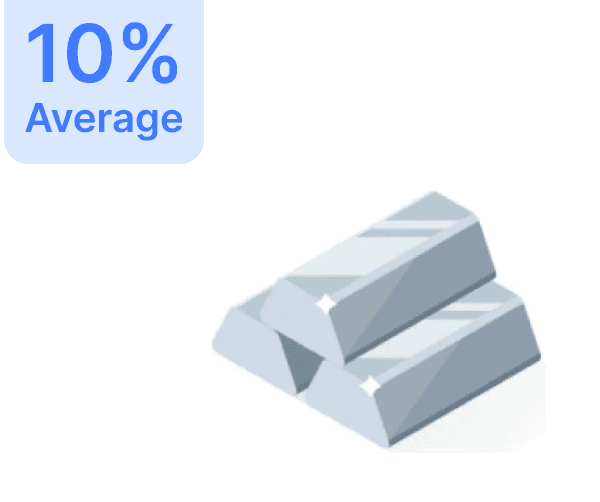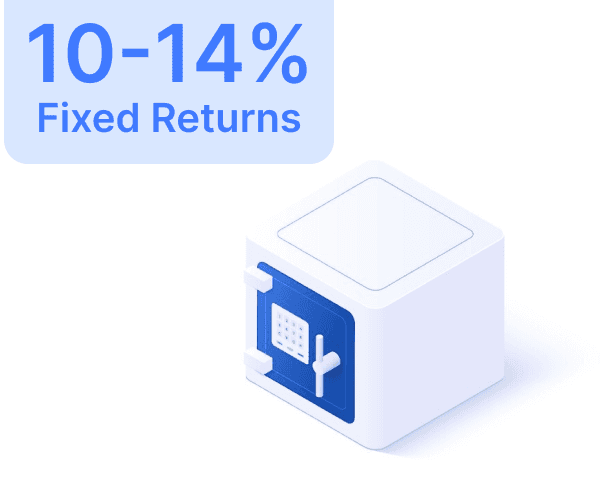
Trusted by 1L+ Indians
Want to Achieve any of the below Goals upto 80% faster?

Dream Home

Dream Wedding

Dream Car

Retirement

1st Crore


Dream Home

Dream Wedding

Dream Car

Retirement

1st Crore


Trusted by 1L+ Indians
Want to Achieve any of the below Goals upto 80% faster?

Dream Home

Dream Wedding

Dream Car

Retirement

1st Crore


Dream Home

Dream Wedding

Dream Car

Retirement

1st Crore


Trusted by 3 Crore+ Indians
Want to Achieve any of the below
Goals upto 80% faster?

Dream Home

Dream Wedding

Dream Car

Retirement

1st Crore

Trusted by 3 Crore+ Indians
Want to Achieve any of the below
Goals upto 80% faster?

Dream Home

Dream Wedding

Dream Car

Retirement

1st Crore

Trusted by 3 Crore+ Indians
Want to Achieve any of the below Goals upto 80% faster?

Dream Home

Dream Wedding

Dream Car

Retirement

1st Crore


Trusted by 3 Crore+ Indians
Want to Achieve any of the below Goals upto 80% faster?

Dream Home

Dream Wedding

Dream Car

Retirement

1st Crore

Pay Scale - Meaning, Salary Structure, Level, Calculation, Examples
Pay Scale - Meaning, Salary Structure, Level, Calculation, Examples



Jun 18, 2024
15 Mins




A pay scale, also known as a salary structure, is a system that determines how much an employee is to be paid as a wage or salary, based on one or more factors such as the employee’s level, rank or status within the employer’s organization, the length of time that the employee has been employed, and the difficulty of the specific work performed. Private employers use salary structures with grades to define the ranges of pay available to employees in each grade or range.
Pay scales are important business planning tools for companies to create new positions when the budget allows, while also providing a standard of transparency where employees know their value and join a company with clear wage expectations. Although any company within any industry can establish pay scales, they are most often used within the public sector for consistency. Implementing a pay scale replaces the traditional salary negotiation and can provide a road map for new employees to see their earning potential within the company while holding the same position. Employees benefit from knowing what to expect in terms of growth and compensation within a given company and can plan a future for their career path more effectively.
Although many factors can influence where an employee places on a pay scale, companies and leadership often develop a set of standards to help in the fair assignment of compensation for new and existing employees to understand the hierarchy of the company and to have confidence that they are paid a reasonable wage. Some factors companies usually consider when creating a pay scale are individual industry, experience in the field, level of responsibility, educational background, and advanced training and certifications.
There are three basic types of salary structures used by businesses in determining employee earnings: broadband, traditional, and market-based. Each type offers different levels of flexibility and methods of determining salaries.
Broadband pay scale format is the least common and offers more flexibility in regard to pay range. The minimum and maximum base pay for a given job are identified, establishing the range of pay available.
Traditional salary structures offer businesses less freedom in determining an employee’s salary because they utilize more pay grades. This method creates a more equitable method of determining salaries and provides more motivation for employees to stay with the same company.
Market-based salary structures are determined by what other employers in an industry pay their employees. This type of pay scale is the most popular and is based on research evaluating what other companies are paying for the same position.
In conclusion, a pay scale is a crucial component of any business's compensation strategy. It helps establish fairness and transparency in salary assignment, provides employees with a clear understanding of their earning potential, and enables organizations to attract and retain talent by offering competitive compensation packages.
A pay scale, also known as a salary structure, is a system that determines how much an employee is to be paid as a wage or salary, based on one or more factors such as the employee’s level, rank or status within the employer’s organization, the length of time that the employee has been employed, and the difficulty of the specific work performed. Private employers use salary structures with grades to define the ranges of pay available to employees in each grade or range.
Pay scales are important business planning tools for companies to create new positions when the budget allows, while also providing a standard of transparency where employees know their value and join a company with clear wage expectations. Although any company within any industry can establish pay scales, they are most often used within the public sector for consistency. Implementing a pay scale replaces the traditional salary negotiation and can provide a road map for new employees to see their earning potential within the company while holding the same position. Employees benefit from knowing what to expect in terms of growth and compensation within a given company and can plan a future for their career path more effectively.
Although many factors can influence where an employee places on a pay scale, companies and leadership often develop a set of standards to help in the fair assignment of compensation for new and existing employees to understand the hierarchy of the company and to have confidence that they are paid a reasonable wage. Some factors companies usually consider when creating a pay scale are individual industry, experience in the field, level of responsibility, educational background, and advanced training and certifications.
There are three basic types of salary structures used by businesses in determining employee earnings: broadband, traditional, and market-based. Each type offers different levels of flexibility and methods of determining salaries.
Broadband pay scale format is the least common and offers more flexibility in regard to pay range. The minimum and maximum base pay for a given job are identified, establishing the range of pay available.
Traditional salary structures offer businesses less freedom in determining an employee’s salary because they utilize more pay grades. This method creates a more equitable method of determining salaries and provides more motivation for employees to stay with the same company.
Market-based salary structures are determined by what other employers in an industry pay their employees. This type of pay scale is the most popular and is based on research evaluating what other companies are paying for the same position.
In conclusion, a pay scale is a crucial component of any business's compensation strategy. It helps establish fairness and transparency in salary assignment, provides employees with a clear understanding of their earning potential, and enables organizations to attract and retain talent by offering competitive compensation packages.
Author



Pluto Team
Share with your friends
Help you friends in learning more about personal finance by share this blog.
Help you friends in learning
more about personal finance
by share this blog.
Help you friends in learning more about personal
finance by share this blog.
Silimar Blogs


Axis Bank Credit Card Net Banking
Axis Bank Credit Card Net Banking
August 5, 2024




PNB Fixed Deposit (FD) Interest Rates
PNB Fixed Deposit (FD) Interest Rates
August 5, 2024




Linking Aadhaar to Your Punjab National Bank Account
Linking Aadhaar to Your Punjab National Bank Account
August 5, 2024




PNB SIP Calculator
PNB SIP Calculator
August 5, 2024




How to Close a PNB Account Online & Offline?
How to Close a PNB Account Online & Offline?
August 5, 2024




TDS Refund - How to Claim TDS Refund
TDS Refund - How to Claim TDS Refund
August 5, 2024


View More
Download App
Explore More
Managing assets totalling over 1 crore+



